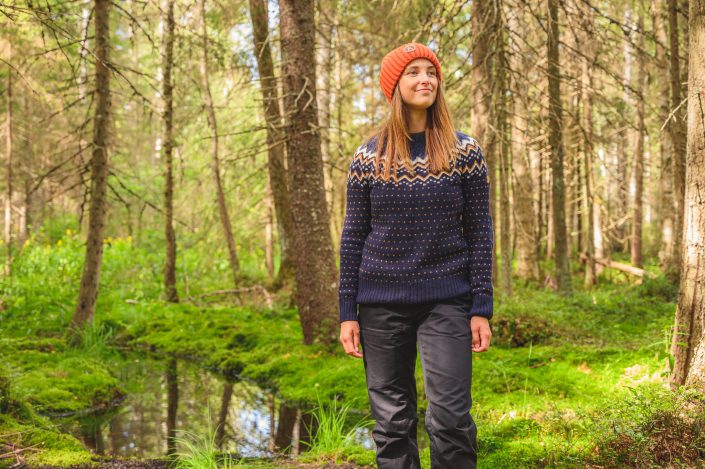

The Responsible Hiker’s Checklist
This year, it has become even more evident how important nature is to us Finns. Nature always welcomes us with open arms, offering a diverse environment for recreation, outdoor sports, or simply a peaceful moment away from everyday life.

Whether you go for a walk, a day trip, or an overnight adventure, nature is always near. Finland is home to 40 national parks, numerous hiking areas, and easily accessible local forests, where we can enjoy our “everyman’s rights.”
The Responsible Hiker’s Checklist
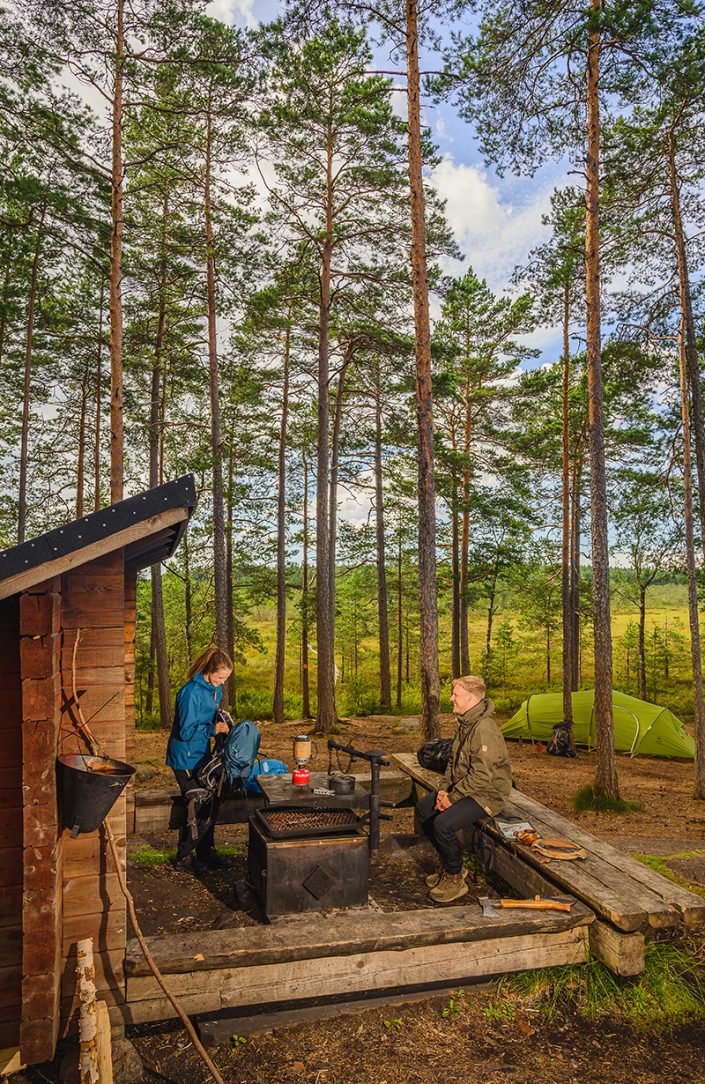
In national parks, recreational areas, and when relying on everyman’s rights, we are free to move about and enjoy a wide range of outdoor activities like hiking, trail running, paddling, skiing, and biking. However, certain rules exist to ensure nature is preserved for everyone. These guidelines help us protect our outdoor spaces—after all, none of us want to damage the places we love.
As a Finnish outdoor specialty store, we at Scandinavian Outdoor take responsible hiking seriously. These may be obvious points to some, but reminders never hurt. Here are five things to always keep in mind:
1. Nature Comes Always First
When we move in nature without harming it, we’re already on the right path. But it’s not always simple—it’s important to learn the local rules of the area you’re visiting. Regulations differ depending on whether you’re hiking on public lands, in a national park, a wilderness area, or a nature reserve.
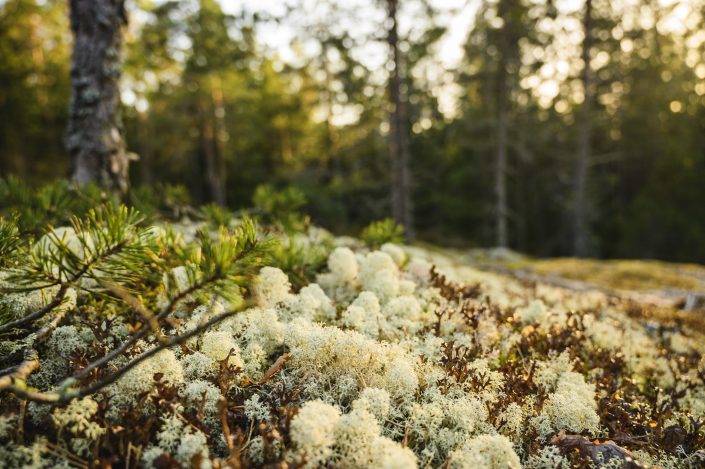
The luontoon.fi website by Metsähallitus is a comprehensive resource that every hiker should explore.
Some key tips:
- Keep pets on a leash
- Respect birds’ nesting periods
- Don’t damage plants or disturb animals
- Don’t build rock piles or other structures
At campfire sites:
- Use firewood provided at designated fire pits; don’t burn valuable deadwood or branches on the ground
- Never strip bark or kindling from live trees
- Don’t carve your own stick from a live branch—bring or buy one instead
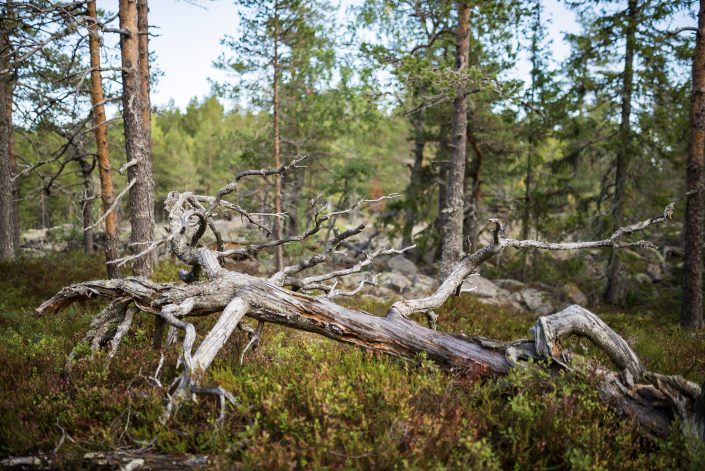
National parks are primarily for protecting nature—not playgrounds. Nature gives us essentials like clean air and water. Without diverse ecosystems, life would not be possible. Let’s take care of it.
2. Use Marked Trails
Areas with heavy foot traffic are prone to erosion. Stick to marked trails to minimize impact. It’s also safer and helps prevent getting lost.
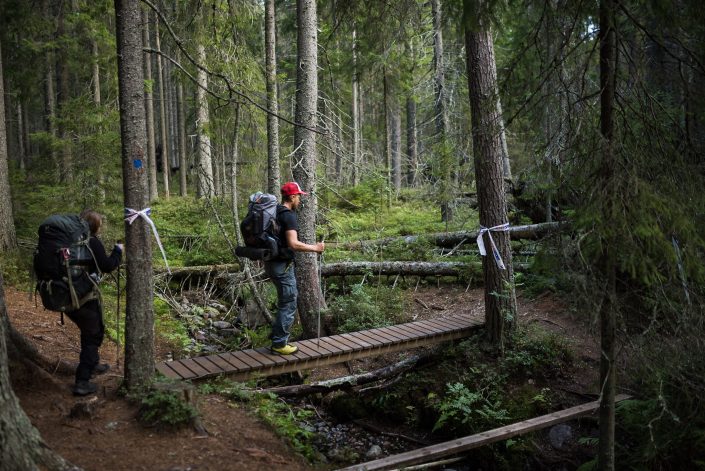
In nature reserves, some areas are off-limits—especially during bird nesting seasons. Always check restrictions in advance, since trails aren’t always marked on site. Studying maps beforehand enhances your trip, helping you discover scenic spots and understand the terrain better. You can use printed maps, print your own, use GPS devices, or download hiking apps for your phone.
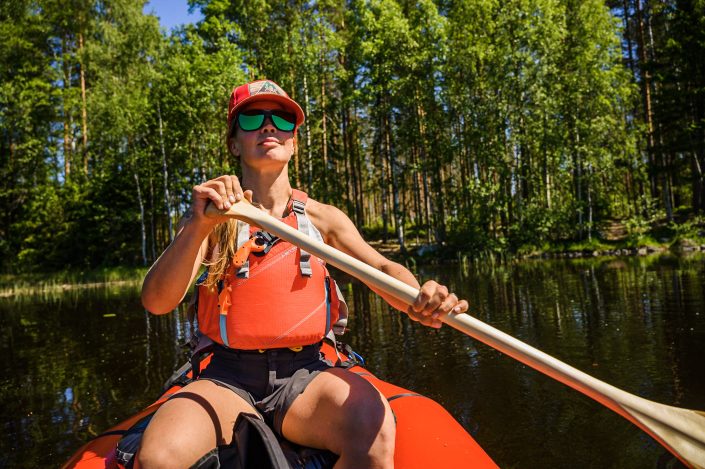
For paddlers: don’t use private docks and maintain a 50-meter distance from private shores. Cycling is not allowed everywhere—check designated bike routes in advance.
3. Know Where You Can Camp
What better way to experience nature than to sleep in it? In Finland, camping is quite free, but there are still limitations. Check the regulations of the area where you plan to stay overnight—rules are often not posted in the terrain.
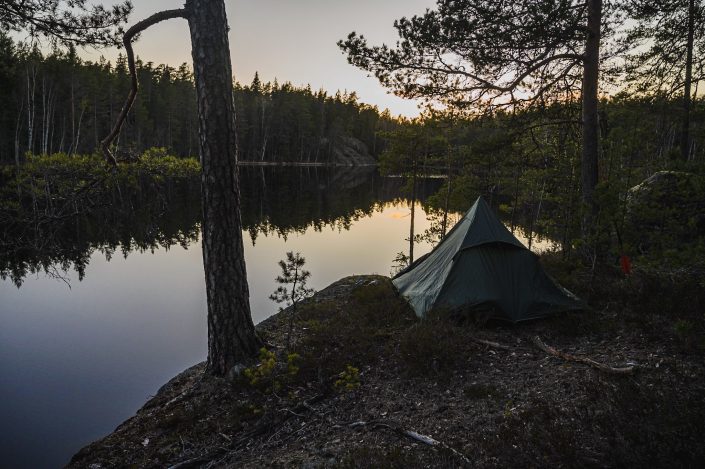
In national parks:
Everyman’s rights don’t apply fully—camping is only allowed in designated areas. You can’t pitch a tent or hang a hammock just anywhere, but campsites are clearly marked on national park maps. Every park has its own rules—learn them beforehand.
Everyman’s rights:
You may camp temporarily where access is allowed. Learn more here.
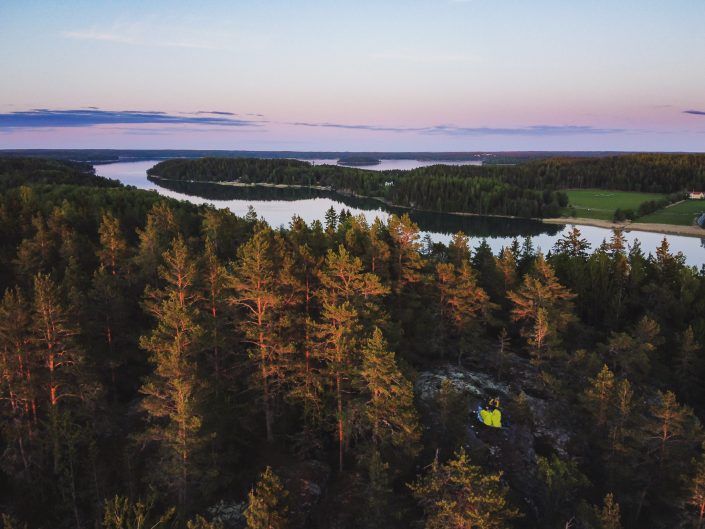
Always bring your own shelter—even if you plan to use a lean-to or wilderness hut, they might be full. In emergencies, your shelter is a crucial safety item. Learn more about wilderness hut etiquette here.
In nature reserves:
Camping is often prohibited, and boundaries must be checked on a map. Unfortunately, rules aren’t always online. If in doubt, assume camping is not allowed.
4. Pack Out All Trash
This might sound obvious, but sadly, trash is still often found in nature. Always take your waste with you. Most destinations don’t have waste management—and even where they do, don’t overload it.
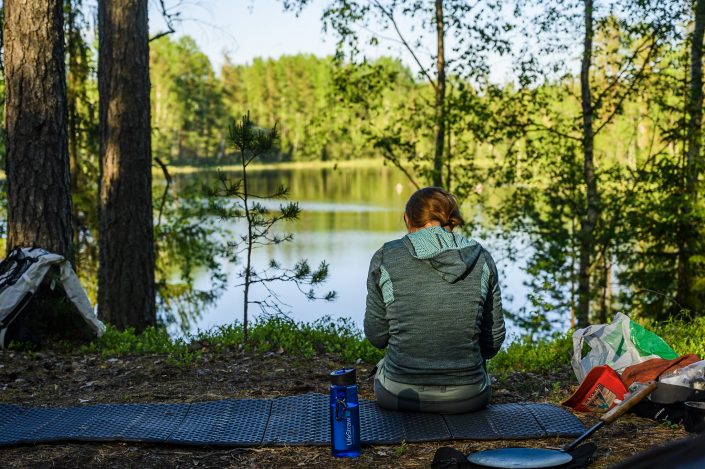
Teach kids to keep track of their wrappers and juice box straws. The wind can easily carry away light items, and an open pocket can spill trash unnoticed. Carry a trash bag or use a specific pocket just for trash.
Ash containers and fire safety buckets found at shelters are not for garbage. It only takes one person misusing them to create a chain reaction. A responsible hiker also picks up trash left by others when possible.
5. Use a Camping Stove First
Campfires are cozy and fun for cooking, but a responsible hiker uses a camping stove whenever possible. Firewood logistics are expensive, and wood should be used sparingly.
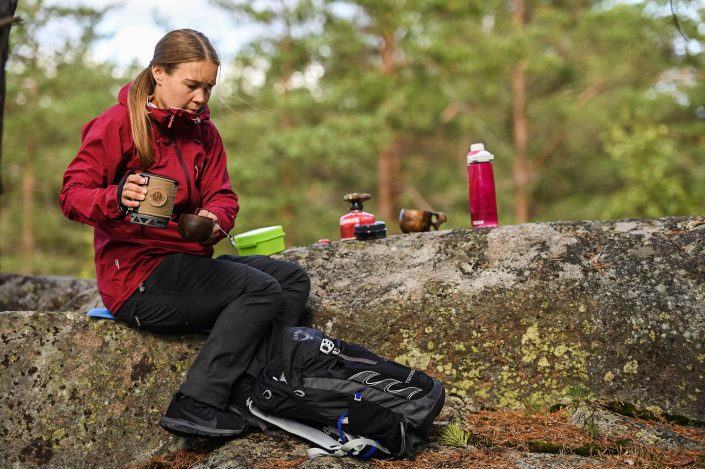
Fires can only be made with the landowner’s permission and never during wildfire warnings. In national parks, fires are only allowed at designated fire pits using provided firewood. You can check warnings via the Finnish Meteorological Institute’s app. Some national parks have covered fireplaces with chimneys that may still be used during warnings, but caution is always required.
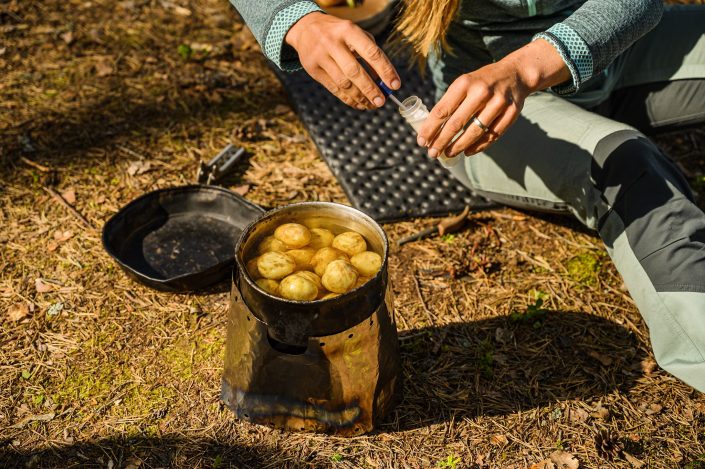
A stove gives you more freedom. It can be used even during fire bans (excluding twig stoves) and allows you to cook outside marked fire spots. This means you don’t have to compete for crowded campfire sites and remain self-sufficient if the firewood runs out.
Click here for a full guide to choosing a camping stove.
The Rules Are Easy to Learn
This may seem overwhelming to new hikers, but the rules are easy to learn. The key is preparation—most of this information isn’t posted in the field. It’s the hiker’s responsibility to follow the rules.

Once you’re out there, these rules quickly become second nature. If we all follow them, the outdoors remains enjoyable for everyone. There are many of us out in nature—using it in different ways. When we treat each other with kindness, we can all enjoy nature peacefully and in our own way.
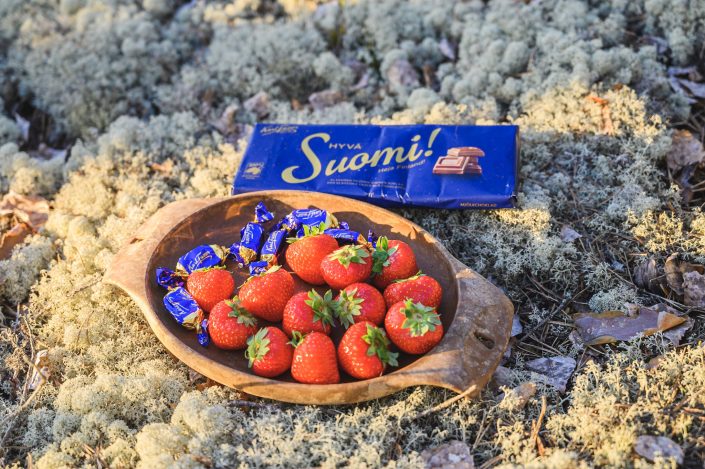
The staff at Scandinavian Outdoor wishes you enjoyable and safe hikes!
Posted: 27.8.2020Modified: 24.4.2025